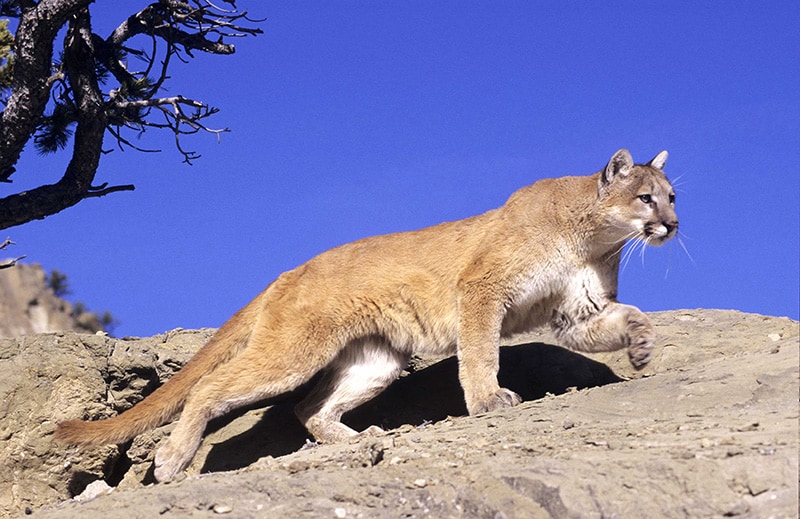Meowing is a quintessential domestic cat behavior. Cats like to cry to humans for attention and food. Most people, when they think about wild cats and the sounds they make, think of roaring. Did you know that not all wild cats roar?
Felidae, the family to which all cats belong, is split into two subfamilies. Pantherinae, the big cats, includes lions, tigers, leopards, jaguars, snow leopards, and clouded leopards. Felinae includes all other felines, such as cheetahs, pumas, lynxes and ocelots, and includes the domestic cat.
Why do Some Wild Cats Roar?
These two subfamilies split wild cats into two categories: wild cats that roar and wild cats that meow. The ability to roar is produced by an arrangement of the hyoid apparatus, which are the bones that suspend the tongue and larynx.
Pantherinae like the lion, tiger, and jaguar, have an elastic ligament called the epihyoideum that allows these cats the ability to produce the lower sound of a roar. Roaring cats are unable to purr because of this physiology. The only exception to this is the snow leopard, which can purr but not roar.
Wild Cats That Roar
Domestic cats, and wild cats in the felinae subfamily like the cheetah, have a bony element instead that produces both the purring and meowing sounds. These cats’ throats contain a strong hyoid bone that confines their larynxes near to the base of the skull and shortens their vocal folds, allowing them to meow and purr.
To see the differences in sounds that wild cats make, this YouTube video features a wide range of wild cats roaring, purring, and meowing. While the meowing is recognizable, it’s definitely not the same high-pitched meowing your indoor cat will make.
Largest Wild Cat that Meows
Pumas (Puma concolor), also known as cougars or mountain lions, are the largest wild cats that meow.

Hast, M. H. (1989). The larynx of roaring and non-roaring cats. Journal of Anatomy, 163, 117. https://www.ncbi.nlm.nih.gov/pmc/articles/PMC1256521/pdf/janat00047-0118.pdf
References
Weissengruber, G. E., Forstenpointner, G., Peters, G., Kübber-Heiss, A., & Fitch, W. T. (2002). Hyoid apparatus and pharynx in the lion (Panthera leo), jaguar (Panthera onca), tiger (Panthera tigris), cheetah (Acinonyxjubatus) and domestic cat (Felis silvestris f. catus). Journal of anatomy, 201(3), 195–209. https://doi.org/10.1046/j.1469-7580.2002.00088.x
Welsh, J. (2021, October 2). Why can’t house cats roar? livescience.com. https://www.livescience.com/why-house-cats-cannot-roar






